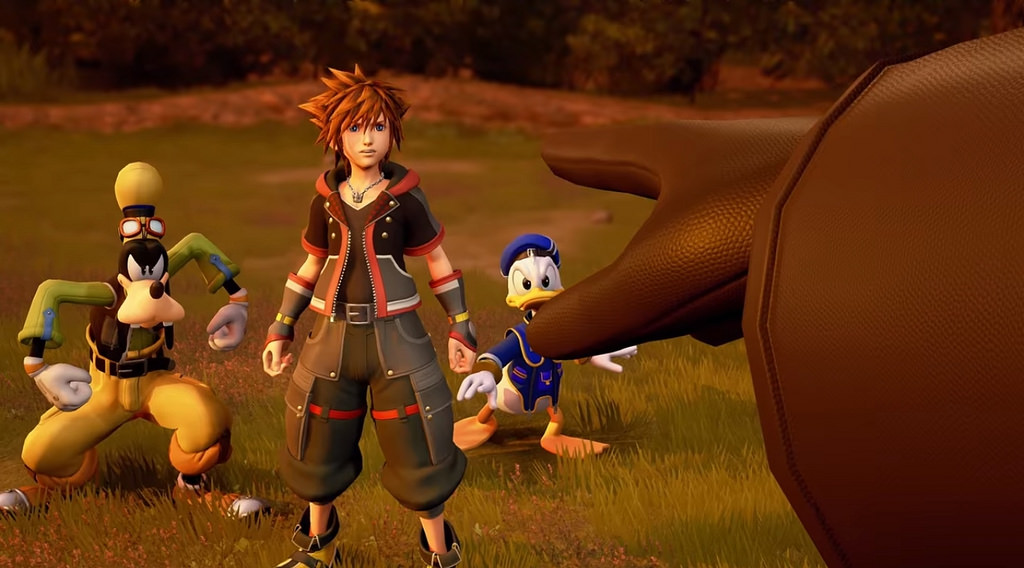Kingdom Hearbreak: It’s $59.99 plus tax

“Kingdom Hearts III,” the long-awaited continuation of the popular video game series, was finally released on Jan. 29. As someone who played the first two titles in the series and coveted the handheld games that were released to tide KH fans over between console releases, I could not be more delighted.
This is the only game I’ve wanted to purchase since I completed “Kingdom Hearts II” in 2006. There’s a problem though: it costs $59.99. Plus tax. My wallet contains less than that, so the game is not in my PlayStation 4. This is a tragedy.
“Kingdom Hearts” is like what would happen if you took the lore of “Final Fantasy” and fired it straight into the gaping maw of Disney. Characters and creatures from the “Final Fantasy” series even appear in KH, along with myriad Disney icons.
The actual extended storyline of KH is a bit more complicated than that, but at its core, it’s about a boy, Sora, who fights the powers of darkness that threaten to consume iconic Disney landscapes. He fights the Heartless with the Keyblade ($39.99 at BestBuy) and with the help of King Mickey’s most trusted advisors, Donald Duck and Goofy. Sora lived on an island with his friends Riku and Kairi until their world was consumed by darkness, Kairi was kidnapped by Disney villains who wanted her heart and Riku joined them, so as the chosen one Sora also fights to save his friends while pushing back the dark.
Now, here we are in January 2019, the heavily anticipated continuation of a beloved childhood game has finally been released, and I don’t have the money for it. My friends all pre-ordered it months ago and are all glued to their video game consoles. They have been reunited with their old friend Sora and have left me behind.
Because I don’t own it, I’m not destroying Heartless with the Keyblade and saving Disney princesses alongside them. If I see even a hint of a spoiler, they will be muted, unfollowed or temporarily unfriended on social media. For a starving college student, all video games are too expensive. Never mind tuition, textbooks also cost an arm and a leg. “Kingdom Hearts III” costs about the same as a week’s worth of dinner or renting the used version of a textbook.
Would using financial aid refund money to buy this game be bad? Is there a rule against that or is it just an ethical dilemma? There’s an educational justification in there somewhere.
A Kickstarter would probably be faster. If that one guy’s potato salad could get funding surely a “Kingdom Hearts III” campaign could work. That’s just 60 people donating one dollar. I know 60 people. A dollar might be wrenched from them. It’s an option. There was only $1.75 under the couch cushions.
A friend of mine pre-ordered the game from Amazon, and they shipped it to the wrong address. This sparked a multiple-post meltdown on Facebook, most of which was just frustration with Amazon, but he was also disappointed because he had been looking forward to taking a trip down memory lane. This brought to mind the intense nostalgia motive for getting this game that myself and many other twenty-somethings have been feeling since the first teaser trailer was released a couple years ago.
Young adults who were kids when the first game came out and fondly remember spending hours playing and replaying and reading the official walkthrough to make sure they didn’t miss anything want this game so bad because they want to relive those memories.
Young millennials and older members of Gen Z are inheriting a cynical world of chaos and constant crisis. The doomsday clock reads two minutes to midnight, and we want to go back to a simpler time of saving the world with a giant key, a wizard Donald Duck, and clumsy Goofy saying “gawrsh” during combat.

